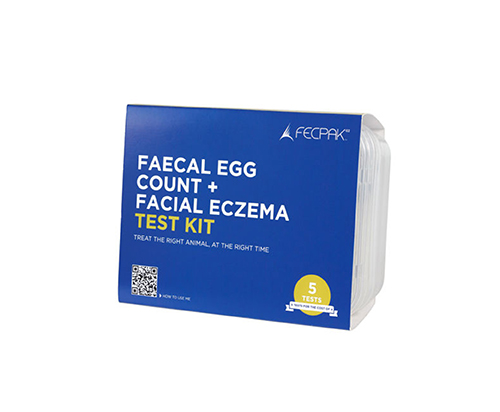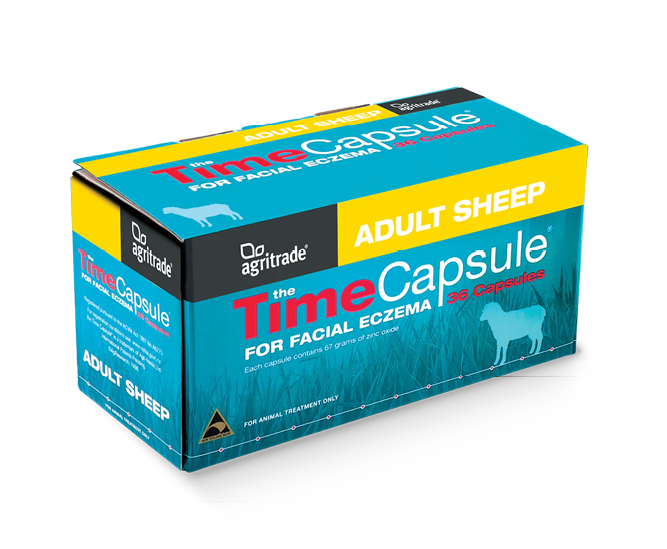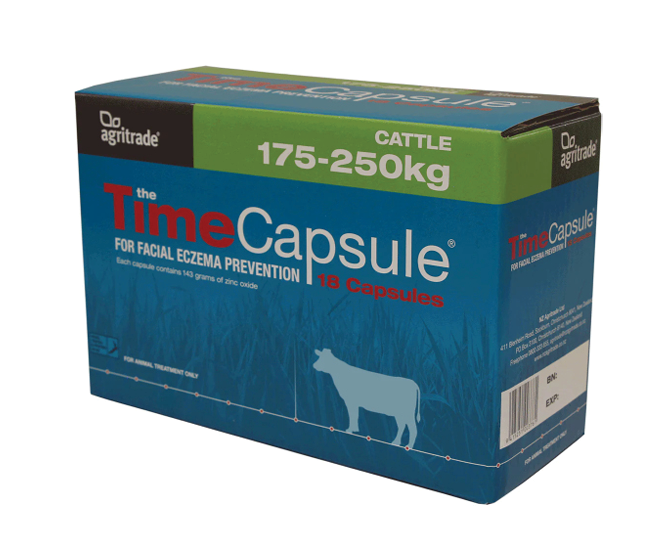

Preventing Facial Eczema with Zinc
Words by Dr Rob Derrick
Facial eczema is a condition caused by the spores of a fungus commonly found living on ryegrass. NRM Mutifeed Nuts + Zinc is another tool in the toolbox farmers can turn to when needing help protecting against the sometimes devastating effects of facial eczema.
Feeding zinc to animals during high risk periods is a great preventative strategy. Zinc forms a complex with the toxin which inhibits its ability to cause damage in the liver. Mary Poppins claimed a spoonful of sugar helps the medicine go down, for grazing ruminants a grain-based compound feed can be more convenient and better balanced nutritionally. Supplementary feed is a popular route to deliver zinc oxide as an aid in the control of facial eczema. The palatability of compound feed can help to offset the bitterness of zinc oxide and when fed at a rate across a mob or herd intakes can be more consistent than trough treatments – especially with sheep.
NRM Mutifeed Nuts + Zinc is another tool in the toolbox farmers can turn to when needing help protecting against the sometimes devastating effects of facial eczema in cattle and sheep. Larger than standard pellets are great for feeding on the paddock. This gives shy feeders a better opportunity to get their share, whilst avoiding over consumption by a few greedy individuals that can dominate troughs. Just make sure you follow the feeding rates on the bag as it is important to dose the right among of zinc per kilogram of body weight to ensure adequate coverage.


The domino effect of facial eczema
The most obvious sign of the disease is sunburn on animals, which is where its somewhat misleading name has come from. Sunburnt faces and udders are, however, just an indicator of a more sinister chain of events going on in the animal. Hot and humid conditions trigger spore numbers to explode so there is a risk from now right through to April, especially in some regions of New Zealand.
- When spores are consumed by animals grazing the pasture, they release a potent mycotoxin into the gut of animals.
- This toxin is then absorbed into the bloodstream and is directed to the liver for detoxification.
- The liver becomes overwhelmed with the toxin and liver damage results (bile duct thickening and blockages).
- A damaged liver is unable to effectively process chlorophyll (which is found in grass) so a breakdown product of chlorophyll spills over into the blood and it is the elevated levels of this in the blood that causes sensitivity to the sun and sunburn.
As you can see it is a complicated domino effect – so by the time you physically see the problem, the animals are already suffering with liver damage. If you live in an area of New Zealand that is affected by facial eczema due to climatic conditions (most of the North Island and the top of the South) it is worth keeping your eye on local spore levels. This data is often given out free of charge by vet clinics. There are some ways to prevent the spores causing liver damage for your grazing stock:
- Take animals off pasture that has a high spore count – although this is often not the most practical solution.
- Feed high levels of zinc to animals during high risk periods
- Fungicides can help to reduce the spore count by hitting the fungus before it produces spores and can be targeted at the worst paddocks.
Note: Feeding high amounts of zinc for extended periods of time can cause toxicity, so ensure that you do not feed high levels of zinc for longer than a 100-day period.
FEATURED PRODUCTS



NRM Multifeed Nuts + Zinc
A convenient supplement to help control facial eczema in cattle and sheep.

FECPAKG2 Test Kit
The 5 FECPAKG2 test kit pack is great value and is a helpful testing kit to monitor animals parasite levels in faecal egg counts and exposure to facial eczema spores.



Agritrade Time Capsule Sheep 40 To 70kg
The Time Capsule is a consistent dissolving bolus that has been made, tested and proven in New Zealand for over 25 years

Agritrade Time Capsule Cattle 175 To 250kg
One bolus per animal that releases a consistent daily dose of zinc oxide to help prevent facial eczema for 4 weeks in cattle and 6 weeks in sheep.